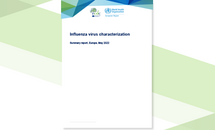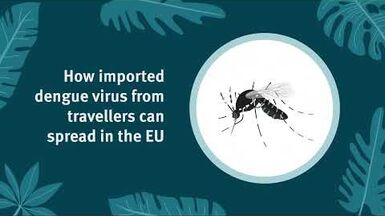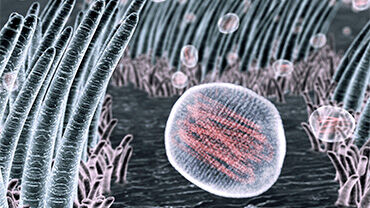Influenza virus characterisation, October 2020
ECDC’s influenza virus characterisation reports are published periodically and give an overview of circulating influenza viruses. They provide details on the current vaccine strains, summarise the development of the viruses since the last report, and closely follow the main developments for the ongoing influenza season. Virus characterisation reports are primarily intended for influenza virologists and epidemiologists.
Executive Summary
This is the first report for the 2020–2021 influenza season. As of week 44/2020, only 39 influenza detections across the WHO European Region had been reported to The European Surveillance System (TESSy); 59% type A viruses, with A(H3N2) prevailing over A(H1N1)pdm09, and 41% type B viruses with none having been ascribed to a lineage. This represents a 97% drop in detections compared with the same period in 2019, probably due to the COVID-19 pandemic and measures introduced to combat it.
Since the September 2020 characterisation report1, no shipments of influenza-positive specimens from the European Union/European Economic Area (EU/EEA) countries, or elsewhere, have been received at the London WHO Collaborating Centre, the Francis Crick Worldwide Influenza Centre (WIC). Therefore, this report focuses largely on genetic characterisation of influenza viruses with collection dates prior to week 40, the start of weekly influenza surveillance reporting for the 2020-2021 influenza season.
The vast majority of A(H1N1)pdm09 viruses have continued to fall in genetic subclade 6B.1A5, mostly in the 6B.1A5A group with few in the 6B.1A5B group. 6B.1A5A viruses have continued to evolve and two subgroups have emerged designated 6B.1A5A+187V/A, representatives of which are recommended for use in the northern hemisphere 20202021 season, and 6B.1A5A+156K, an antigenically distinct group representatives of which are recommended for use in the southern hemisphere 2021 season. Following a rise in the number of 6B.1A5A+156K viruses detected, the two subgroups appear to be currently circulating in approximately equal proportions.
Recently circulating A(H3N2) viruses have continued to fall in clades 3C.2a and 3C.3a, with the vast majority of clade 3C.2a viruses being in the 3C.2a1b group which has now been divided into four subgroups designated 3C.2a1b+T131K-A, 3C.2a1b+T131K-B, 3C.2a1b+T135K-A and 3C.2a1b+T135K-B. Antisera raised in ferrets show high levels of clade/group specificity, though there is some subgroup cross-reactivity. Viruses representative of subgroup 3C.2a1b+T135K-B have been recommended for use in influenza vaccines for the northern hemisphere 2020-2021 season and the southern hemisphere 2021 season.
Of four antigenically distinct groups of viruses in the B/Victoria-lineage, only two have circulated recently, small numbers of that designated subclade 1A(2) with a two amino acid deletion in HA1 and that designated subclade
Download







